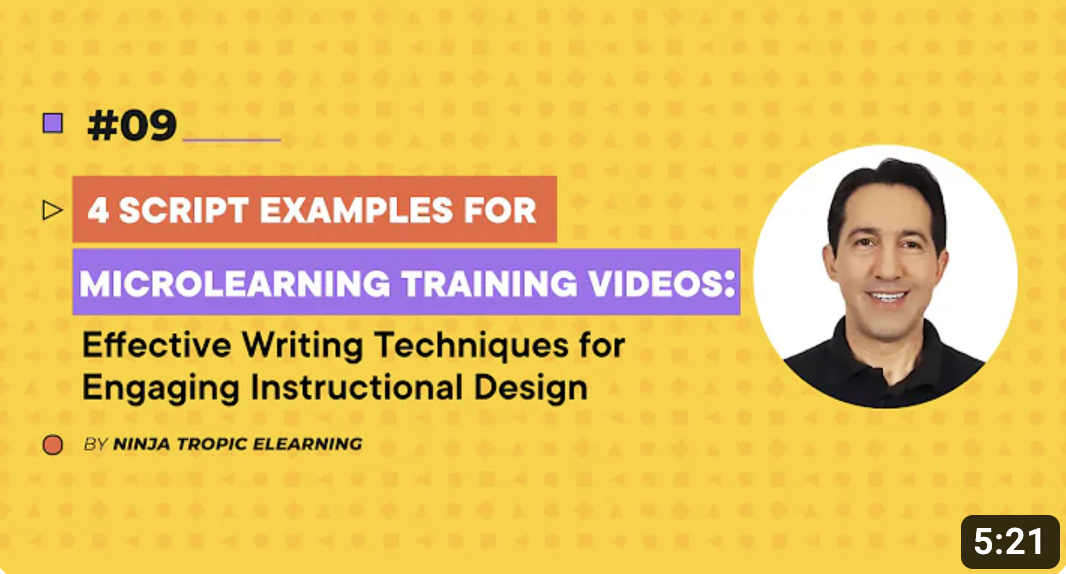
Ultimate Guide for Education & Training Video Production
Setting up a successful e-learning project has several moving parts.
It requires a deliberate focus on the production process and a highly skilled professional team that is attuned to the changing landscape in the eLearning space.
In this article, we will explore the various dimensions regarding the education and training video production that will help you in your future endeavors.
So, let us get started.
Advantages of Educational Training Video Production

Those times have passed when training videos were synonymous with PowerPoint presentations. Nowadays, the use of videos for training purposes has gained immense popularity.
1. Easy to Demonstrate and Convey Complex Ideas via Videos
The educational training video production has revolutionized the learning environment. Creating animated sequences and using video provide requisite scaffolding for the learners. In contrast, the text-based presentations are difficult to decipher.
2. Easier to Present a Large Quantity of Information
Videos are one of the most effective ways of displaying large amounts of information. It is easier to comprehend the data and explain complex topics through short sixty to ninety animated footage.
3. Visual Learning Performs Better Than Any Other Type of Training Activity
One of the primary reasons for using video for training and educational purposes is that it enhances the appeal to different learning styles all at once. There are some folks who learn better through written words, and there are those who absorb information much quicker through graphic means.
With the help of different design templates, all the learning types can be easily accommodated in a video.
The Most Common Types of Videos
Regardless of the fact, whether it is a corporate training program or any other education course, there are five types of videos that one can choose from: live shot footage, slideshows, animated videos, combined video, and audio podcasts.
1. Live Shot Footage
One Static Camera: This is the simplest filming technique where the person can set up a camera and point it towards the actor, speaker, or subject matter and just start shooting. The whole scene is shot from a single angle.
Two Static Cameras: This is an upgrade to the previous technique. Instead of one static angle, the speaker gets filmed from two angles. There are two main reasons for the same: it makes it more engaging and makes the scene more visually expressive. It can also help increase viewer empathy by drawing attention to a particular moment and emotion.
2. Slideshows
Recorded Presentations: This is a very familiar method used in university lectures. This helps in displaying all the information along with clarification of key points and concepts.
Branded and Unified Slideshows: The presentation draft, along with the voiceover, is sent to the production team. They unify the files and adjust the narrative if required. The main reason is to make the video more structured, streamlined, and visually unified.
Templated Slideshows: They are more advanced. The course designers create a few sets of basic animation sequences and combine them in multiple ways with the source file.
3. Animated Video
Custom Animation: It is one of the best techniques for the demonstration of complex concepts and for videos that have specific technical requirements that can not be met with other methods. They generally require more resources for production.
Animation Toolkits: The toolkits offer ready-to-use assets, animation libraries, templates, and sound galleries. It can help achieve more detailed animation, illustrations, and graphics with a limited budget.
Screencast: They are simple screen captures that are accompanied by a voice-over.
- Recorded: They generally demonstrate the product interface and functionality.
- Aminated: These are the screencasts that are enhanced with animations that help enhance certain elements of the production.
How Do You Pick the Right Video Type For E-Learning?
There are multiple factors that determine the choice of particular types of videos, such as the budget, characteristics of the targeted audience, and desired effects. One element that takes precedence over others is the compatibility of the specific type of video with the specific type of information. So, the ultimate decision should be a blend of the above considerations.
Wrapping Up
The development of e-learning projects includes multiple stages of production and nuances. The above article explores certain dimensions of production: advantages, types of videos, and the right pick to make your task easier.
Hopefully, this was helpful.
Trending
-
1 Jocko Willink's Inspirational Life & Net Worth
Aaqil Ashraf -
2 How Art Shapes Culture and Reflects Human Experience
Luke Fitzpatrick -
3 Meet Felix Williams and Maria Arthuer: The Parents of World Class Winger Nico Williams
Felix Yim -
4 Kai Cenat's Dad and the Enduring Public Interest
Aaqil Ashraf -
5 London Tube Stations Closed as Workers Stage Strikes
Mihir Gadhvi







Comments